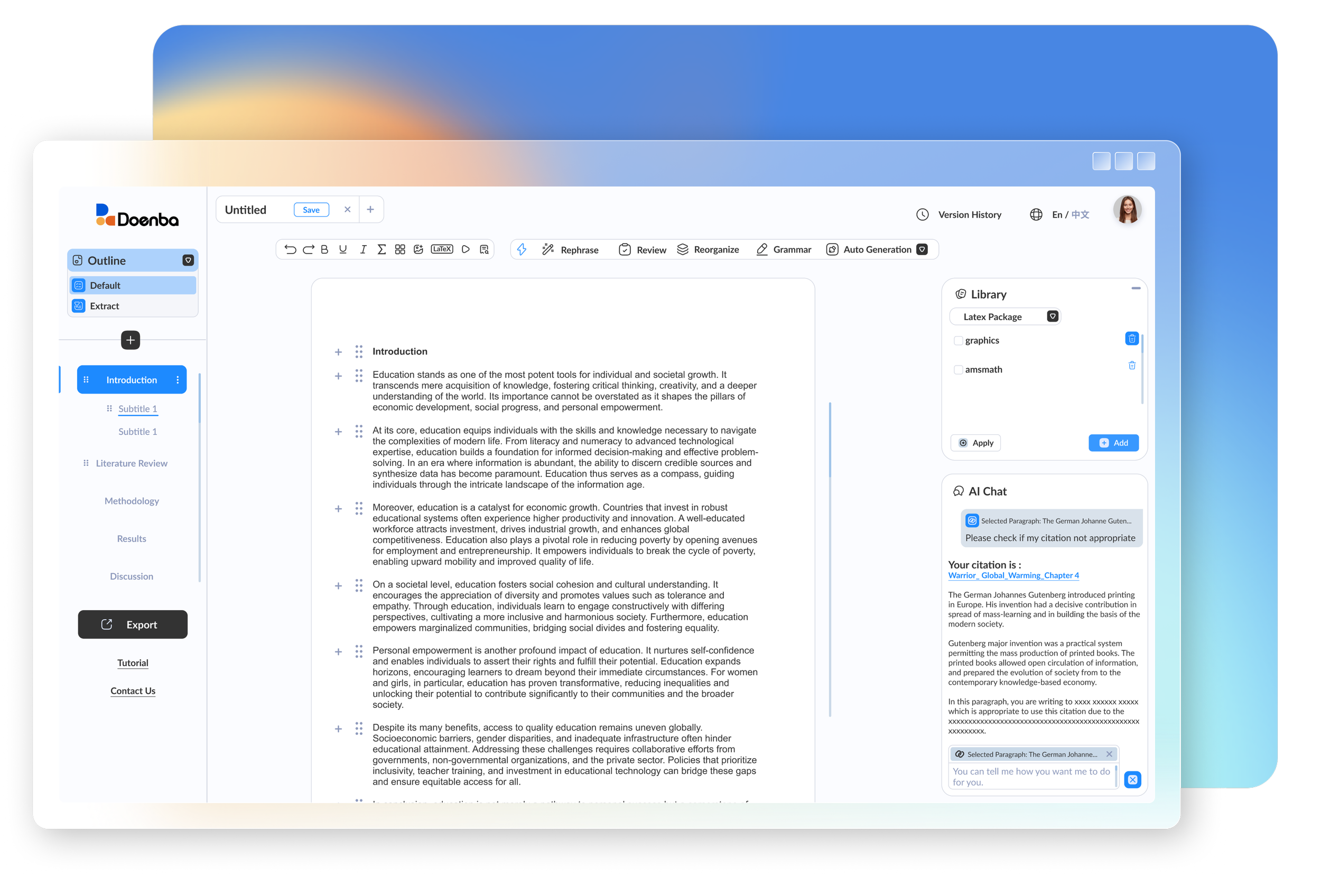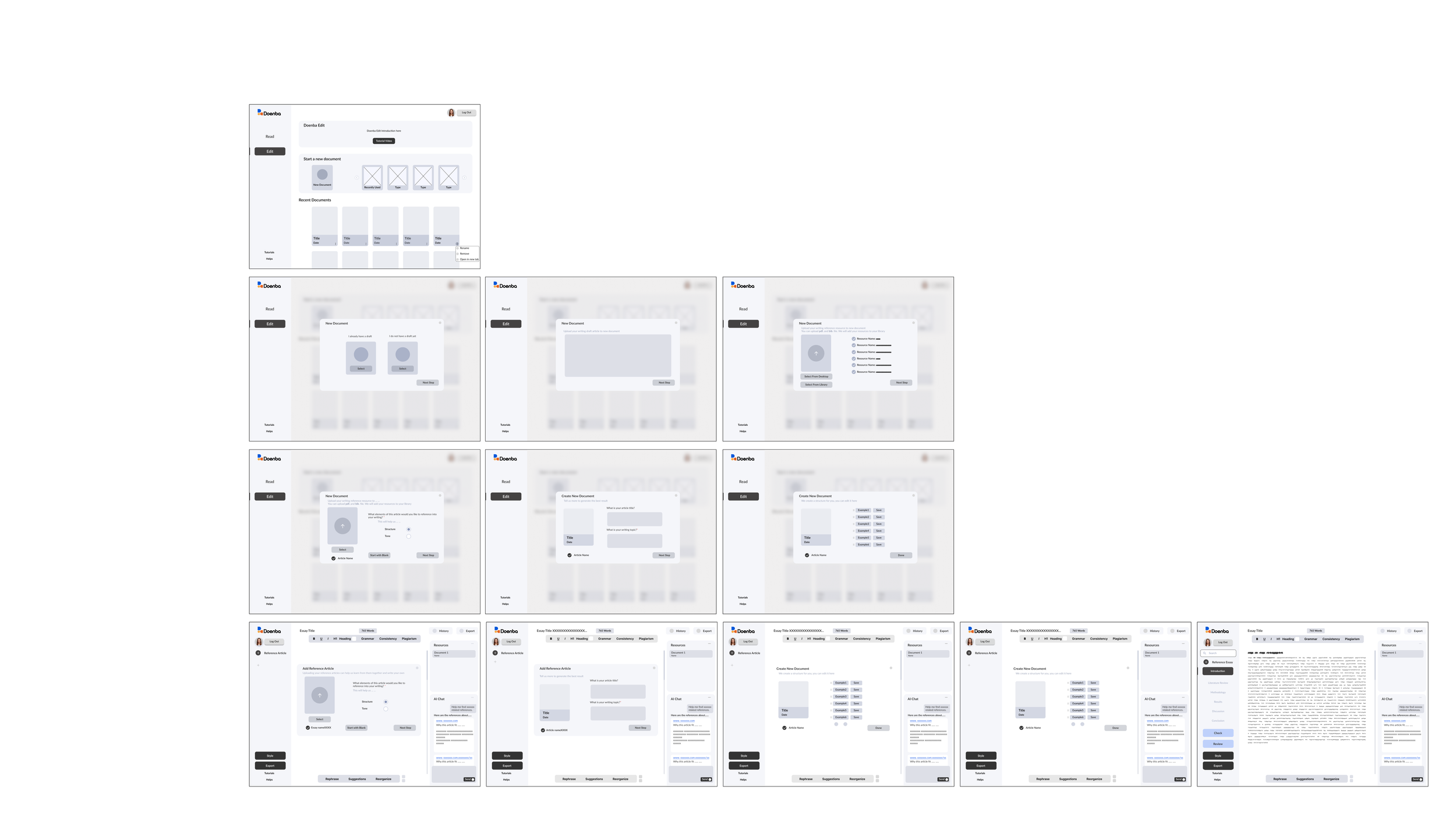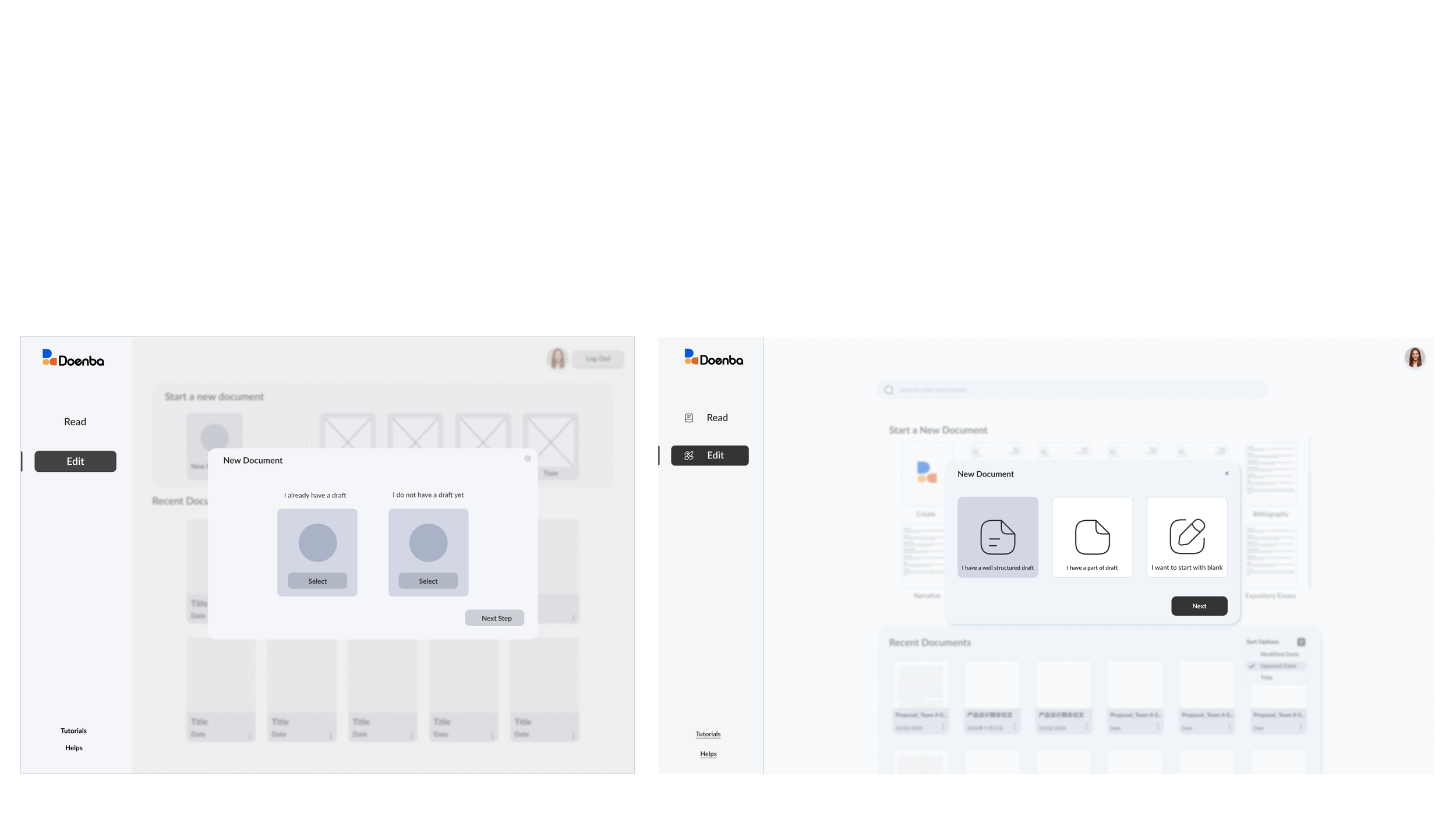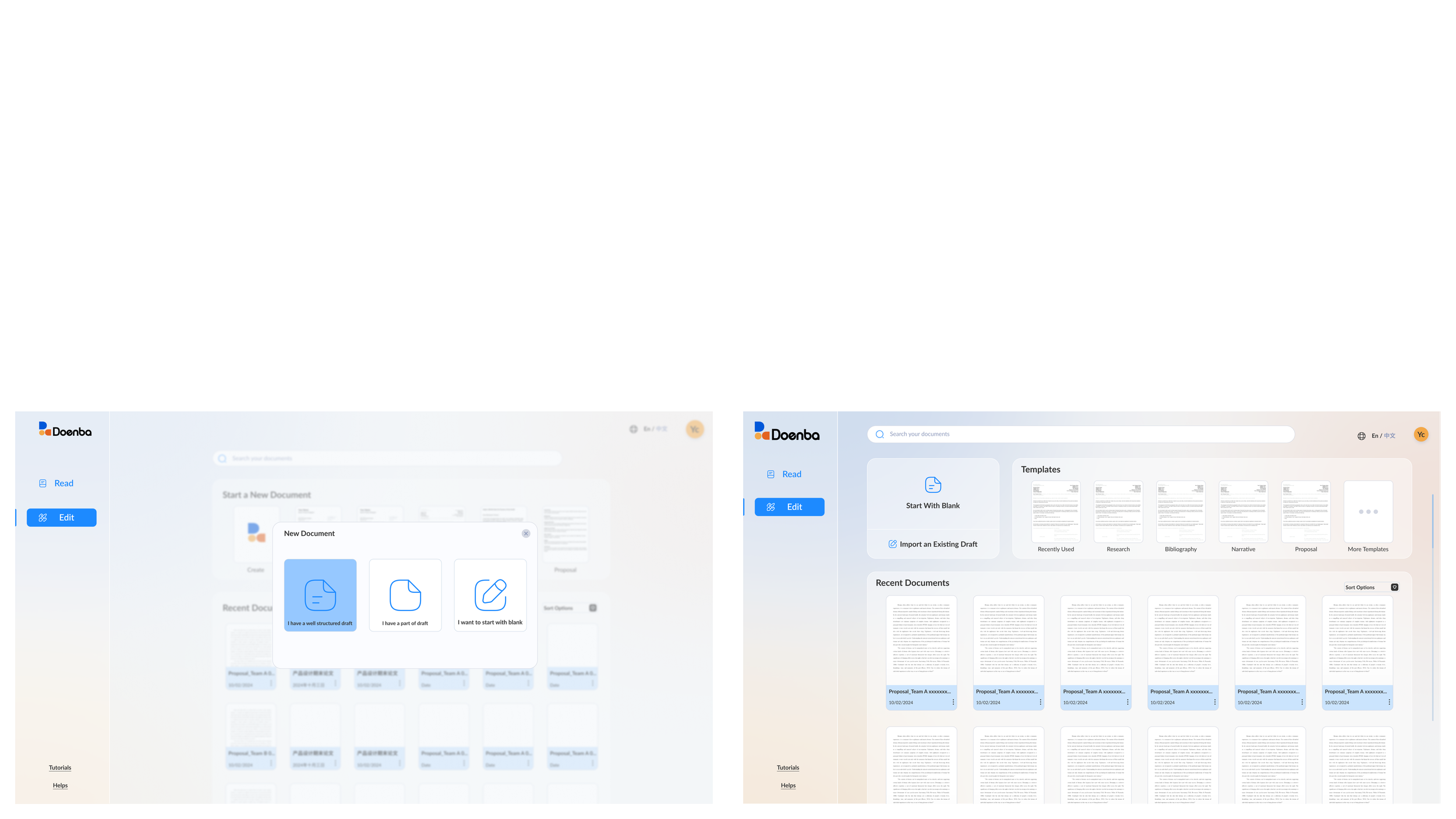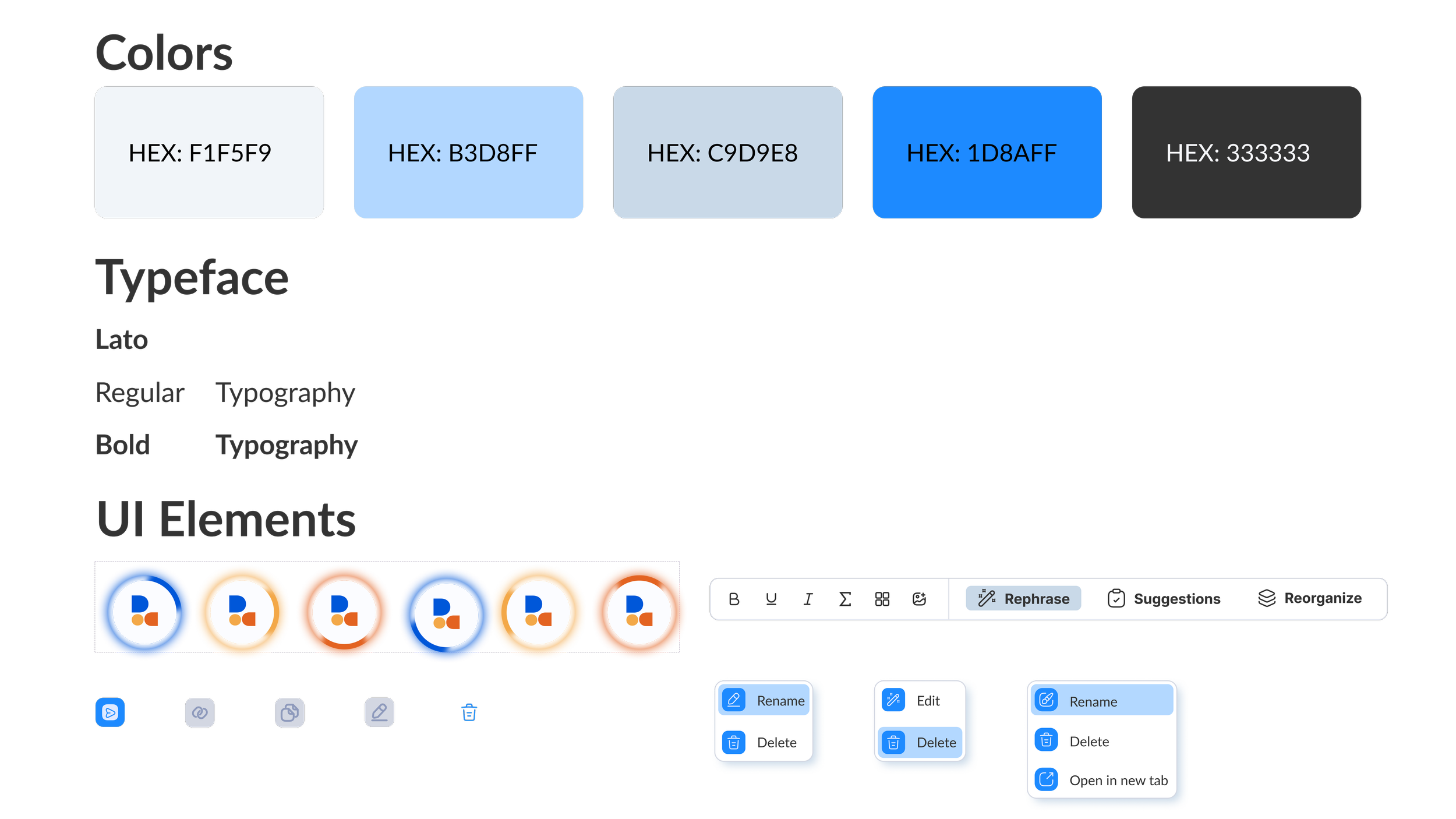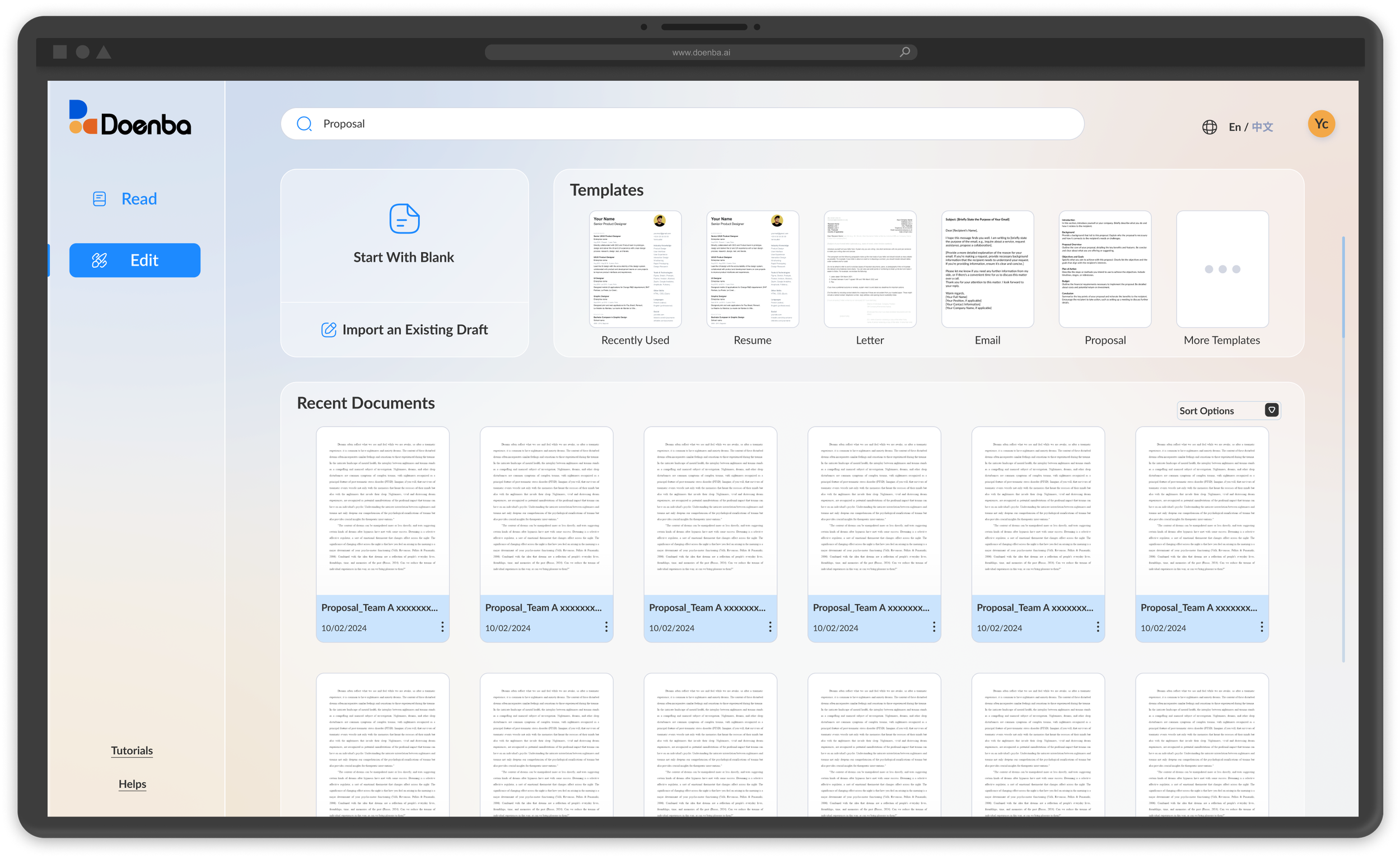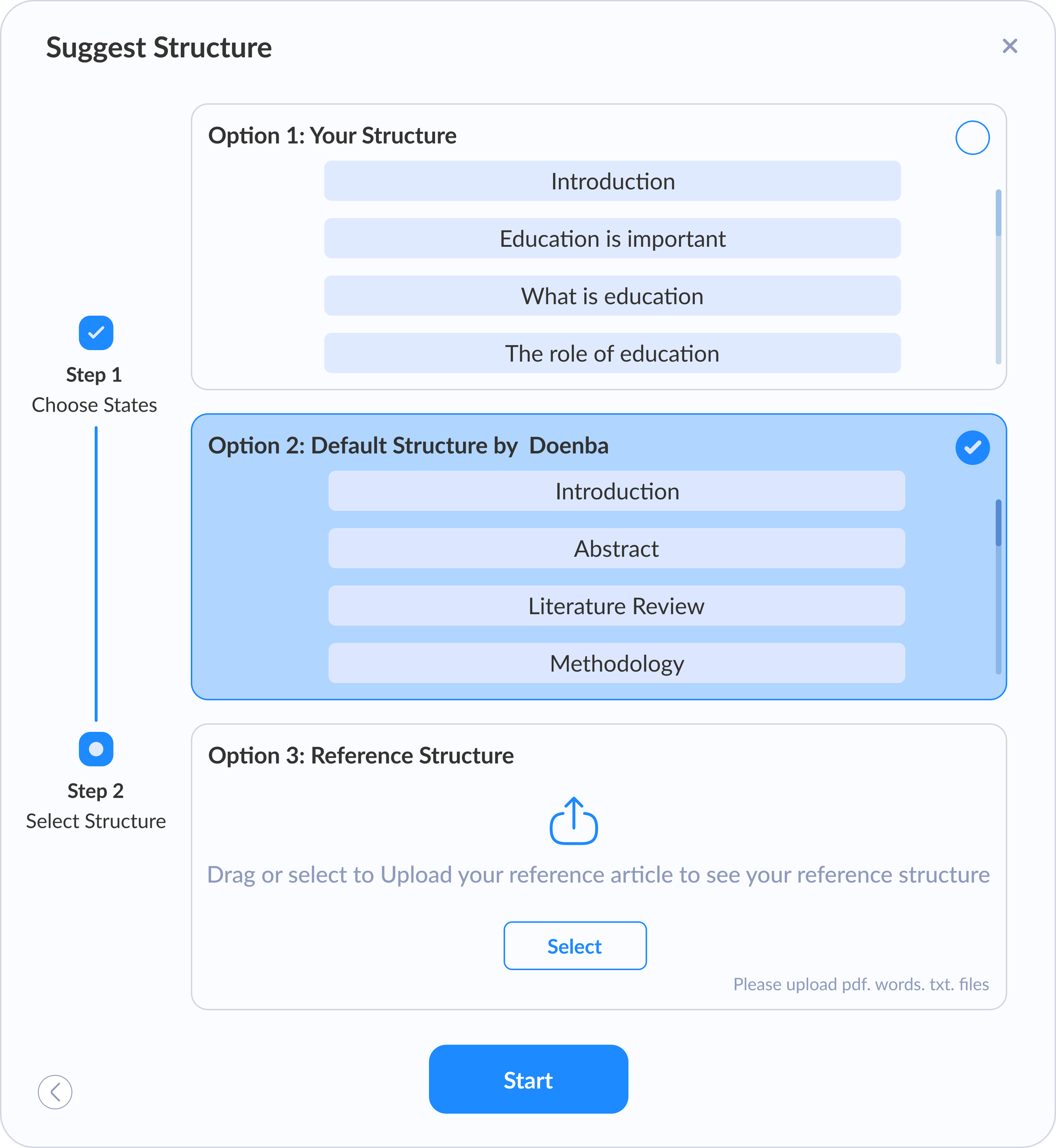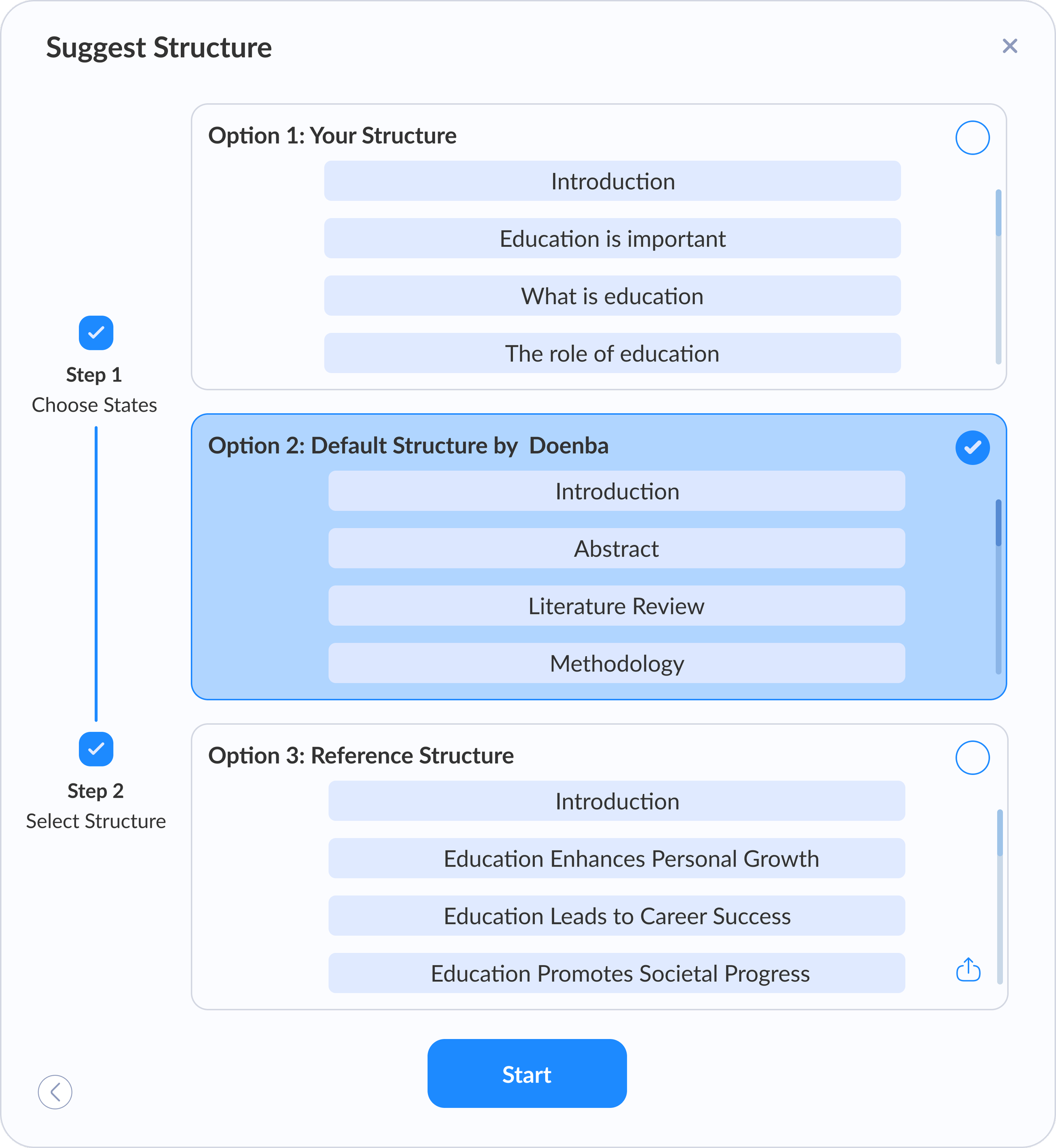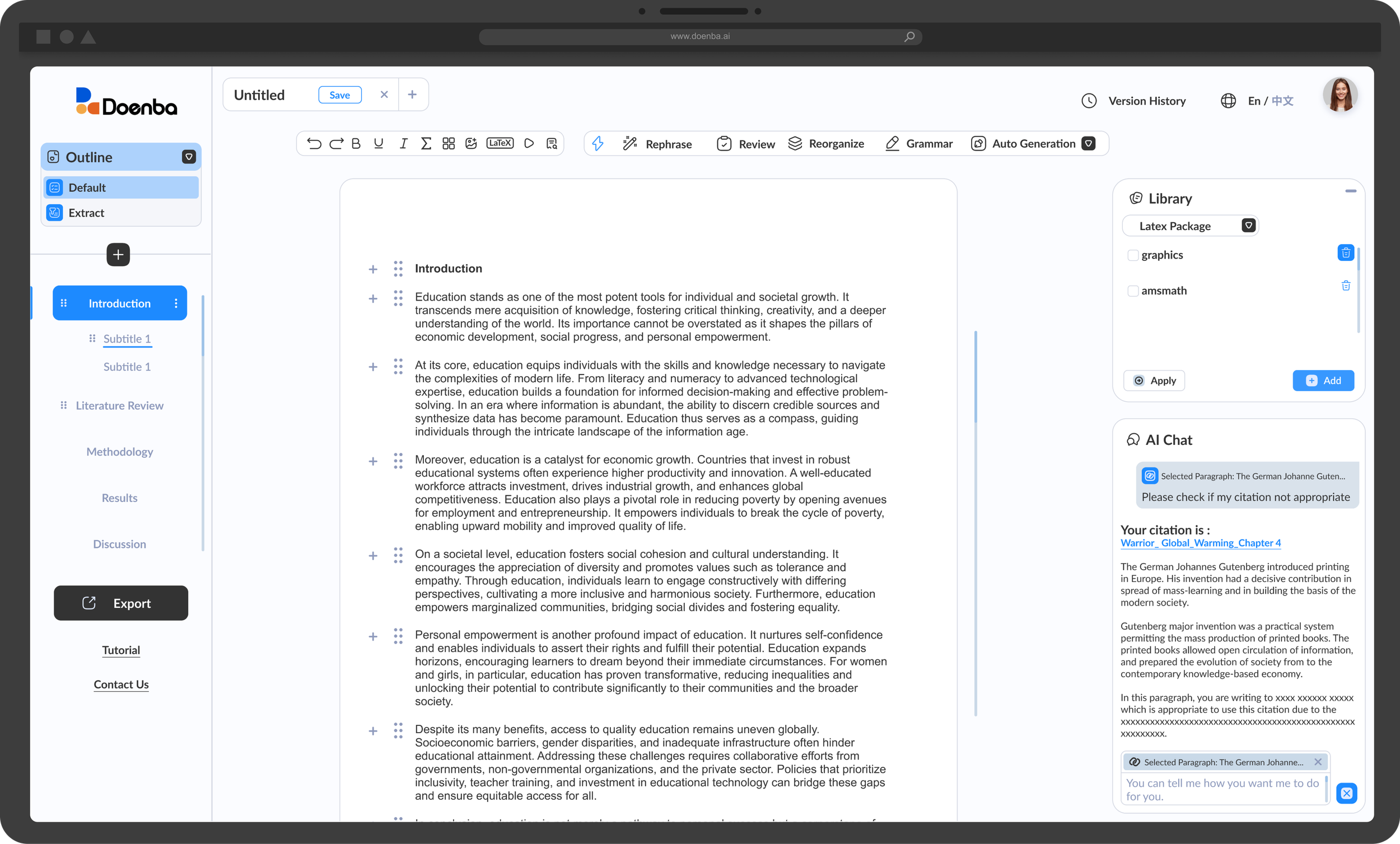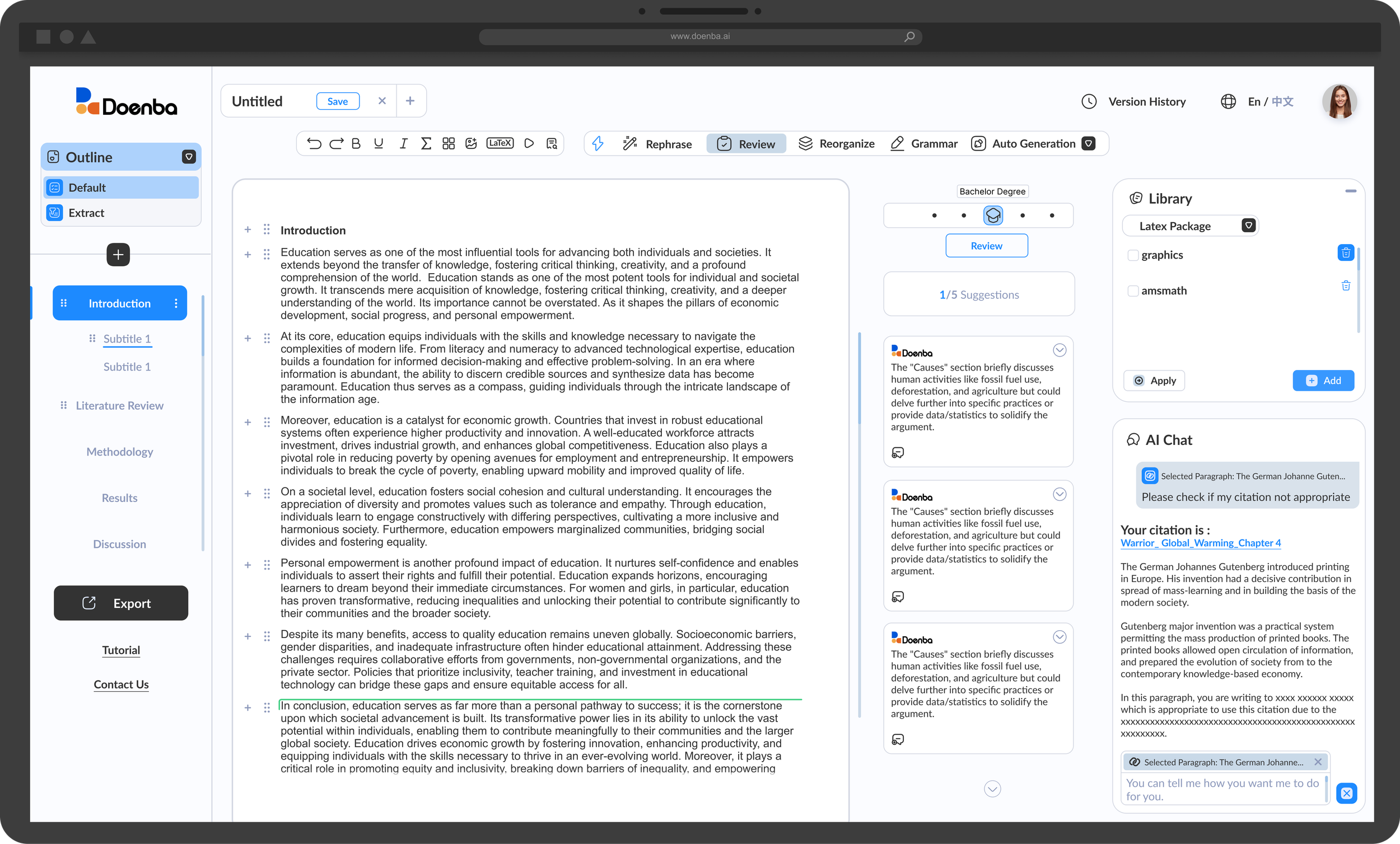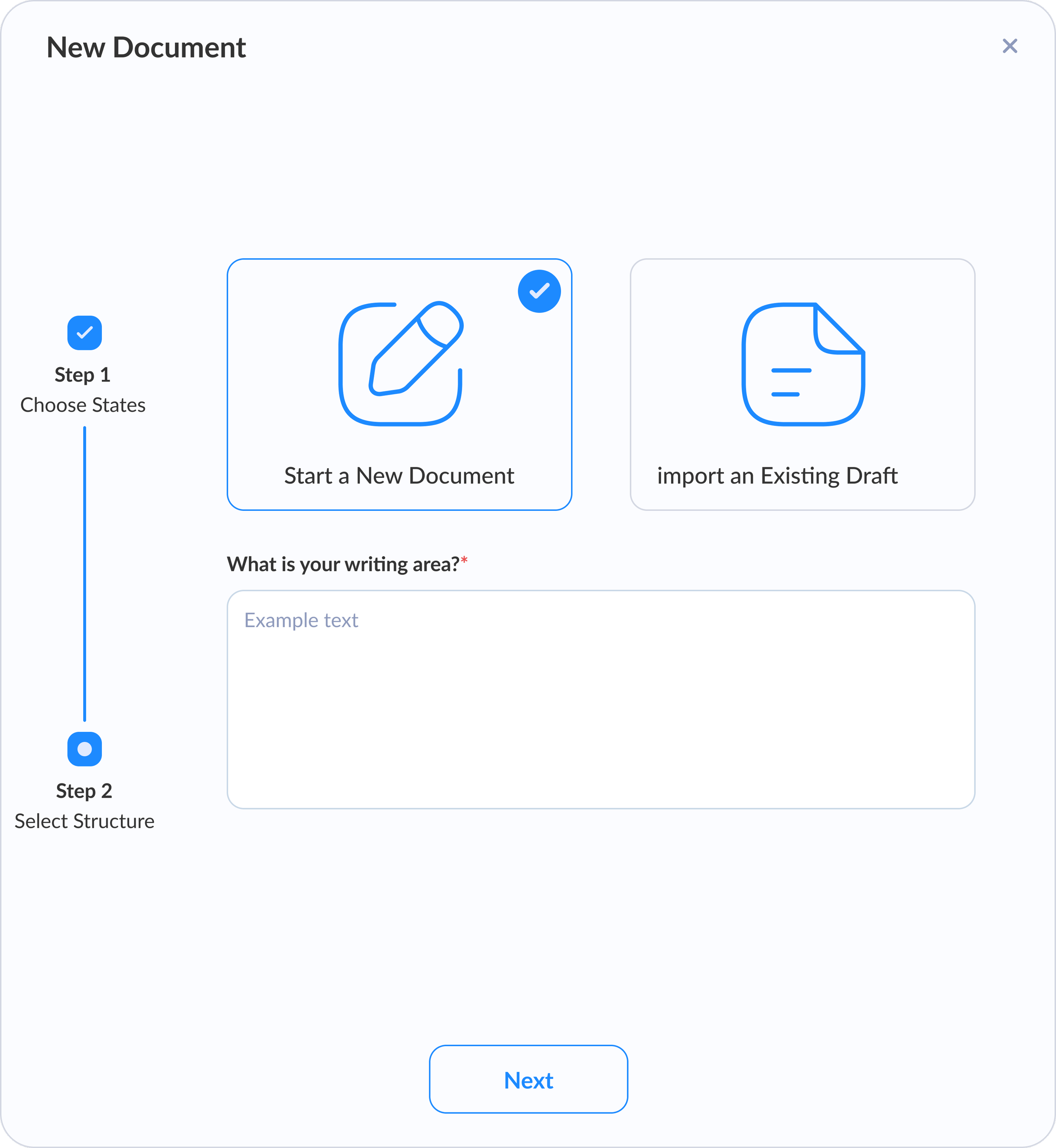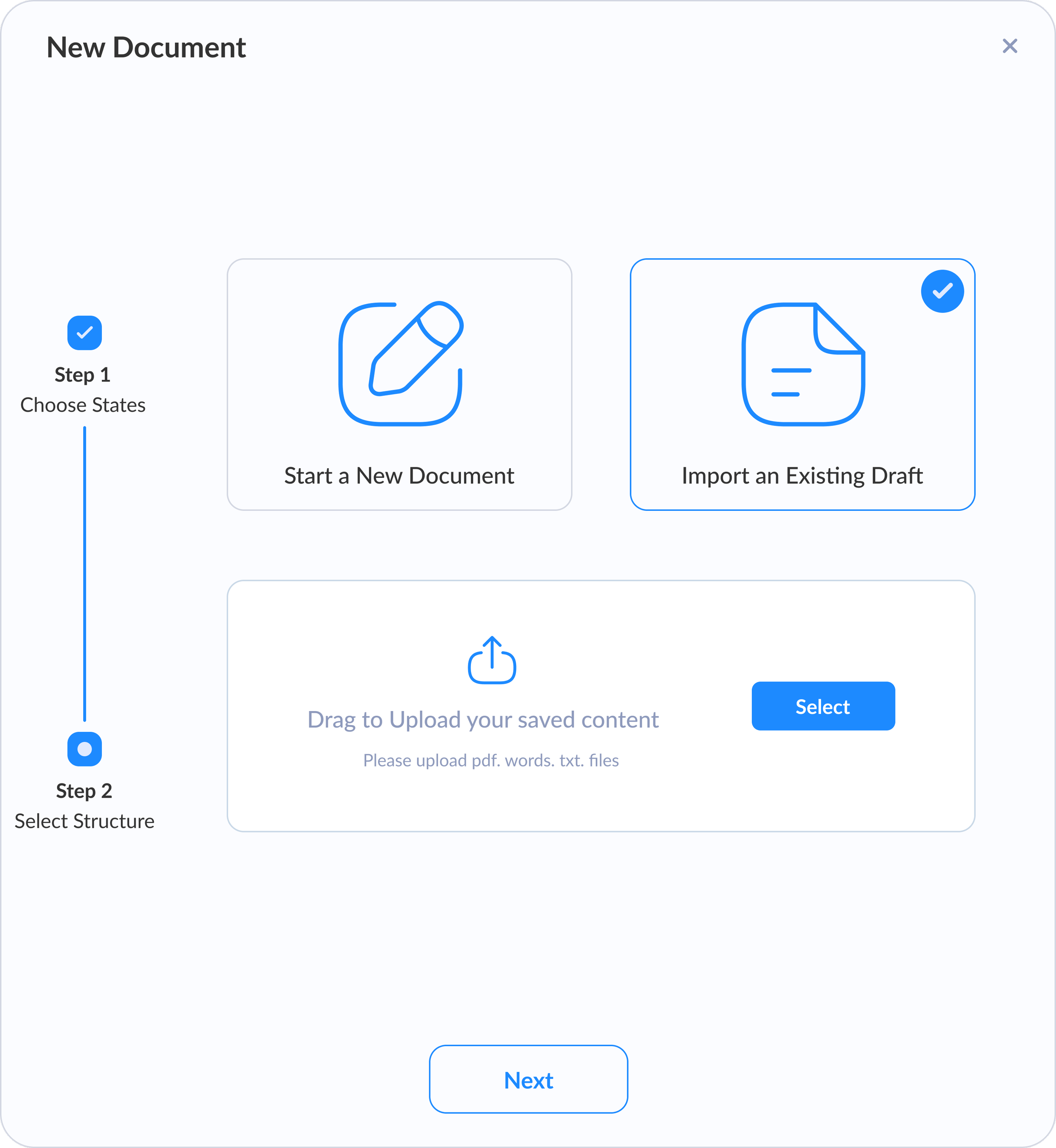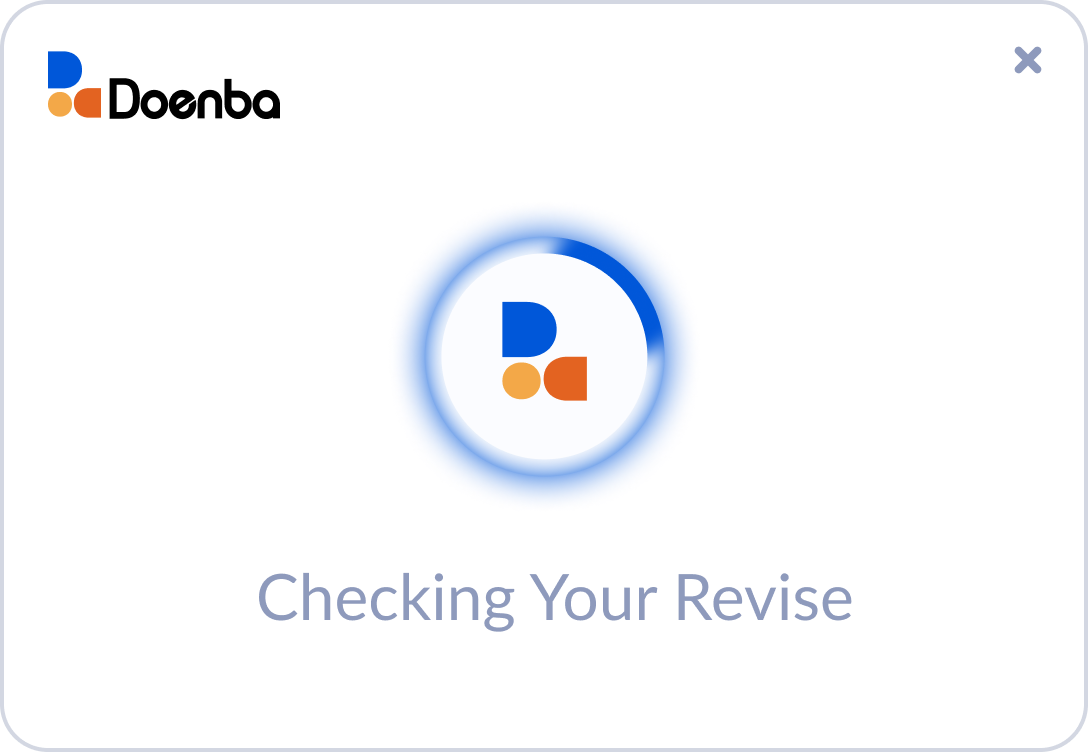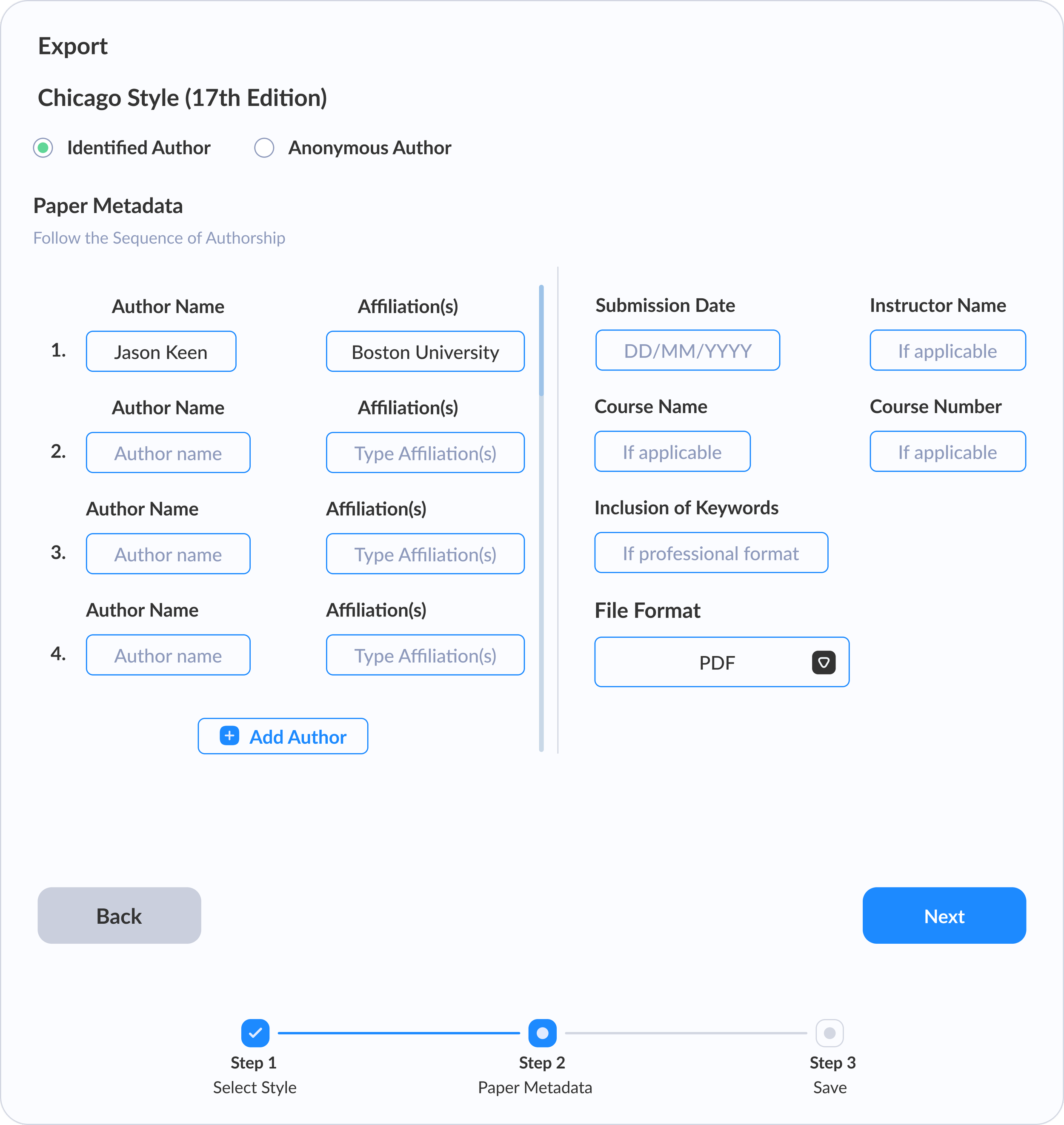AI-powered academic writing platform enabling students and researchers to effectively draft and publish academic papers, emphasizing ethical AI usage and preventing academic misconduct.
Design Scope
Research, Information Architecture, Wireframes, User Flow, Design System, Prototype, Design Thinking, Market Research, UX Strategy
Duration
Sep 2024 - Present
Currently in Programming and Prepare for Launch
Tools
Role
UXUI Design Lead
Redefining AI Writing Tools
The AI writing tools market is experiencing rapid growth, valued at approximately $400 million in 2023 and projected to expand to $2.4 billion by 2030 at a CAGR of 26.9% (2024–2030) (Source: Verified Market Reports). Despite this momentum, adoption is hindered by user attitudes that often frame AI tools as shortcuts for quick results rather than resources for meaningful learning or self-improvement.
Key Findings
Through comprehensive user research, I identified the following trends and challenges
Proposed Solution
To address these challenges and bridge the identified market gaps, I propose designing a platform that redefines the role of AI writing tools. The vision is to create a tool that not only enhances productivity but also fosters skill development and learning.
Design Process
Primary Perception of AI Tools
Many users view AI tools as productivity aids that deliver quick solutions or reduce workloads.
Barriers to Adoption
Skeptics and detractors of AI tools frequently cite concerns about reliance on technology and a lack of meaningful personal benefit, contributing to a negative perception.
Market Gaps
Existing platforms lack a unified solution that combines structured writing assistance, AI-driven reviews, multi-language support, and professional-quality auto-typesetting in a cohesive, user-friendly interface.
Structured Writing Assistance
Guides users in organizing their ideas, enabling clearer and more effective communication.
AI-Driven Reviews
Offers personalized feedback on grammar, tone, style, and overall impact, promoting improvement.
Multi-Language Support
Ensures accessibility for global users by integrating robust multilingual capabilities.
Auto-Typesetting
Delivers professional, polished outputs with minimal user effort.
Initial Wireframes
Created low‑fidelity wireframes to validate key workflows with target users
Iteration Phase 1
Swapped large tutorial banner for a task‑first “Create + templates” panel above the fold
Left rail slimmed; added icons and a crisp Reading / Editor mode switch
Added global search and consistent context menus
Recent Docs' spacing & hierarchy cleaned to cut visual noise
Replaced two choices with three clear, task‑based options (well‑structured draft / partial draft / blank).
Added intuitive icons + plain‑language labels for instant recognition.
Removed redundant first step; single‑click into editor once option selected.
“Next” button disabled until a choice is made → prevents empty‑state errors.
Iteration Phase 2
Phase 2 Solution:
• Inline tab control with just two unmistakable choices
– Start Blank (no draft)
– Import Draft (any existing content, partial or full)
• Templates remain visible for one‑click selection
Before
Before
Net result: faster onboarding, less confusion, smoother user flow.
Before
After
After
Problem in Phase 1:
• 3‑option “Create” modal caused hesitation (“partial or full draft?”)
• Extra dialog violated least‑click principle
Design Goal:
Make the first step clearer, simpler, faster
After
Result:↓ Choice time 37% ↓ Clicks by 1 ↑ Perceived clarity in usability tests
User Flow & System Architecture
UI Style Guides
Design Outcome
Design Outcome
Comprehensive Writing Support
Whether user are brainstorming ideas, drafting content, or polishing the final version, Editor provide tailored support for every stage of users’ writing journey via writing status chosen.
The AI-powered features in Doenba Editor was designed with a user-centric approch to enhance writing without compromising originality. The goal was to create an intuitive, structured, and ethical AI-driven guidance system that empowers users to refine their content while maintaining full control over their writing process.
AI Rephrase
AI Review
Design Approach
Clear & Non-Intrusive Feedback Mechanism
The AI highlights areas that require improvement but does not automatically modify the text. Users can review explanations on why changes are recommended, fostering a learning-oriented experience.
AI Reorganize
Export
Guided, Yet User-Controlled Workflow
Users have the flexibility to either "Check" (after revising) or "Ignore" suggestions.
The iteration loop encourages self-improvement, ensuring users actively engage with revisions rather than passively accepting them.
AI re-analyzes the content only when prompted, ensuring users drive the editing process.
Final Thoughts
Smart Academic Structuring
Upload references to auto-generate structured content for key sections, boosting efficiency and accuracy.
Dynamic Chapter Display and Navigation
Intuitive Chapter Highlighting: Stay focused and organized with a dynamic structure bar that automatically highlights the section users are working on. This seamless navigation helps user write more efficiently and stay in control of their document.
Clear, Visual Hierarchies: Effortlessly understand document’s structure at a glance. Prominent main titles and distinct, indented subtitles showcase the hierarchy, making complex documents easy to manage.
Dynamic Chapter Display and Navigation
Enhanced Academic Precision: Fine-tune your writing with built-in LaTeX tag manage complex formulas, citations, and formatting with ease, delivering professional-quality academic documents every time.
Efficient Resource Management
Centralized References: Manage figures, tables, equations, and sections effortlessly, saving time and improving efficiency with a single, organized platform.
Personalized Document Library: Upload and access your PDFs anytime in a dedicated library, keeping all your resources at your fingertips
Design Approach
Smart Interaction & Visual Feedback
Designed a subtle yet visible color scheme to differentiate original text from AI suggestions, ensuring readability and accessibility.
Intuitive and Consistent Interaction
Users can apply or dismiss rephrased suggestions instantly with a single click, eliminating unnecessary steps to reduce friction in the editing process.
Minimalist UI Integration
Designed context-aware interactions, allowing users to make quick decisions without interrupting their workflow. Maintained a clean, distraction-free design that integrates naturally into the document editor.
Guided Decision-Making with Clear Explanations
Users are presented with multiple structured organization options, each with a clear explanation of its advantages.
Before selecting, users can read why a specific structure might be beneficial, enabling informed decision-making.
Side-by-Side Preview for Easy Comparison
The original document and the reorganized version appear in two preview windows, allowing users to compare the structure before applying changes. Users can toggle between different structures to evaluate how each impacts the flow and coherence of their writing.
Minimizes risk—users can see how changes affect the document before committing. Encourages interactive revision, reinforcing a hands-on, learning-oriented approach.
Effortless Integration & One-Click Application
Once satisfied, users can apply the reorganized structure with a single click. If preferred, users can retain the original version, ensuring full control over their content.
The Apply button provides a final confirmation step, reducing unintended modifications.
Design Approach
Ethical & Learning-Oriented AI Implementation
Unlike AI-writing tools, this feature guides rather than writes, ensuring users develop critical thinking and writing skills.
Feedback is constructive, explaining why changes are needed instead of just pointing out errors.
Reinforces academic integrity and professional writing standards.
Design Approach
Effortless Access to Past Exports
Frequent export also could be a pain point for users. To enhance cross-device accessibility and reduce repetitive work, users can re-download previously exported files, eliminating the need to reformat documents from scratch when switching devices.
Customizable & Real-Time Formatting Previews
Users can select from a range of predefined formatting styles or upload their own custom style. The preview panel on the right dynamically updates as users select different styles, ensuring real-time visualization of the final document.
Metadata Input Aligned with Formatting Requirements
Users complete a structured metadata form in Step 2, ensuring all the information aligns with the selected format requirements. Ensures compliance with academic and journal submission standards
Intuitive & Guided Export Workflow
Three-step process ensures clarity and ease of use. The progress indicator helps users track their process, providing a structured and guided experience.
Reflection & Key Learnings
1. Empowering Users—AI as a Guide, Not a Dictator
One of the biggest challenges in designing AI-driven workflows is ensuring the technology supports users rather than making decisions for them. My goal was to craft an experience where AI serves as an intelligent assistant—providing structured guidance, previews, and insights—but always keeping users in control.
2. Minimalist UI—Letting AI Work in the Background
AI can be a powerful tool, but if it overwhelms the interface, it disrupts the user’s workflow instead of enhancing it. The challenge was to integrate AI suggestions without clutter, ensuring that users could focus on their content first, AI second.
3. Frictionless Workflows—Encouraging AI Adoption Through Simplicity
Even the smartest AI is useless if users find it too complex or unintuitive.
AI should enhance, not overpower, the user experience. Keeping users in control, interfaces clean, and workflows effortless not like a black box making decisions on behalf of the user.


